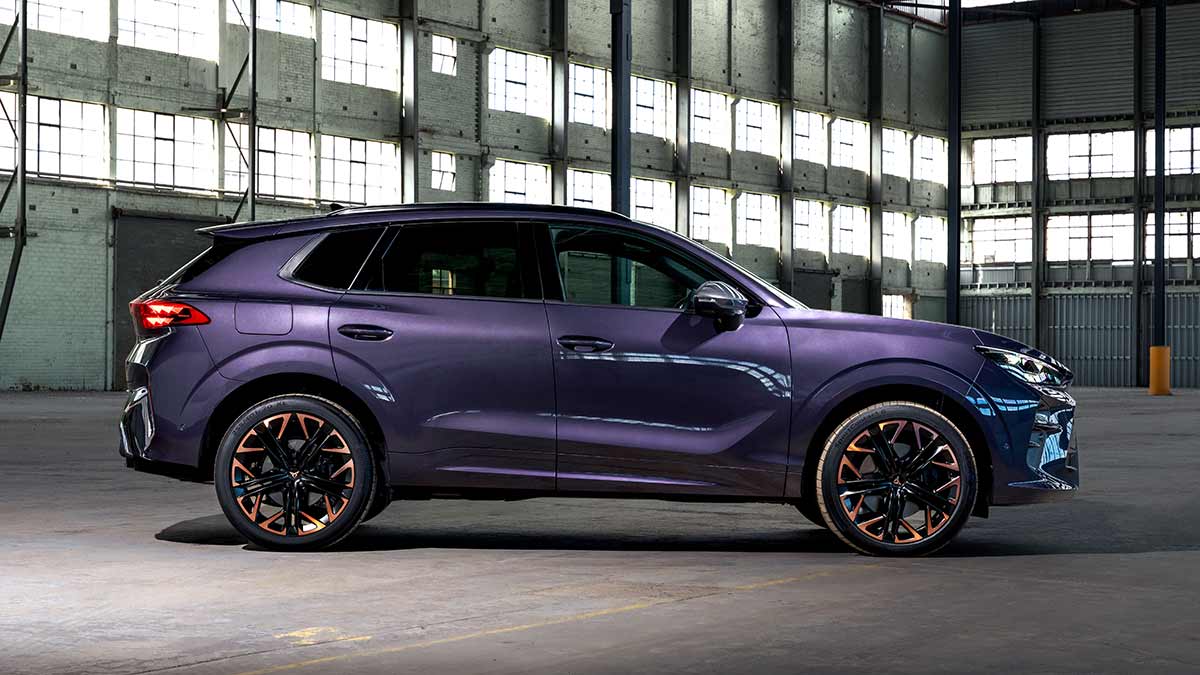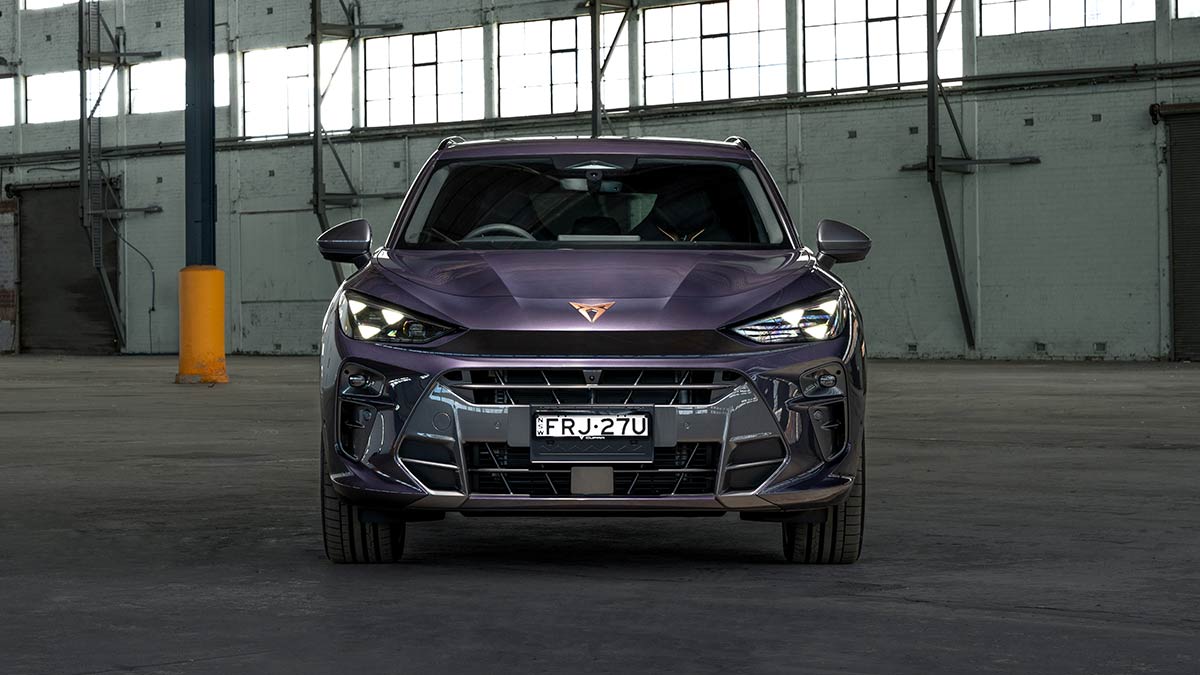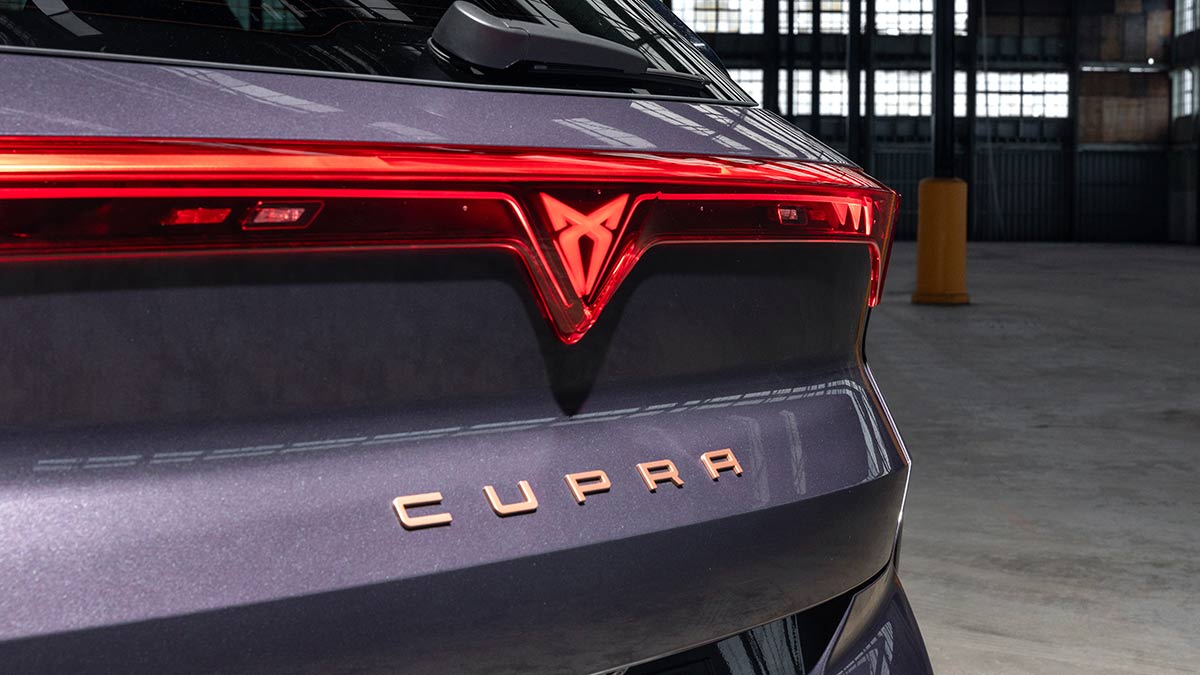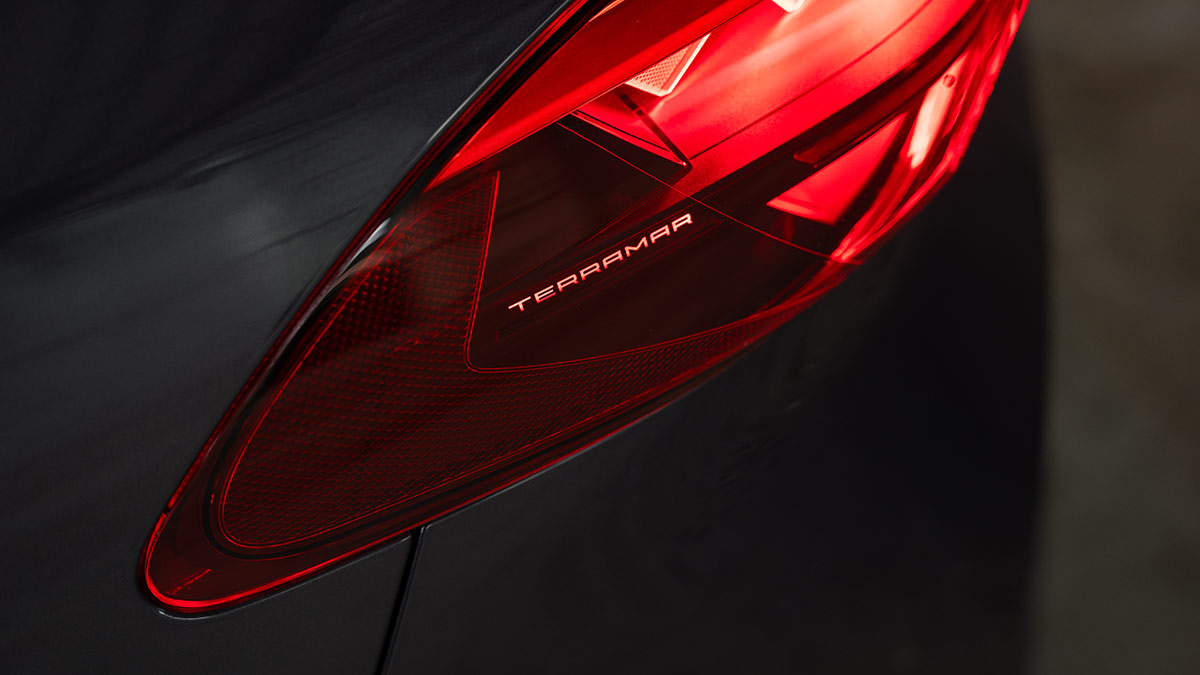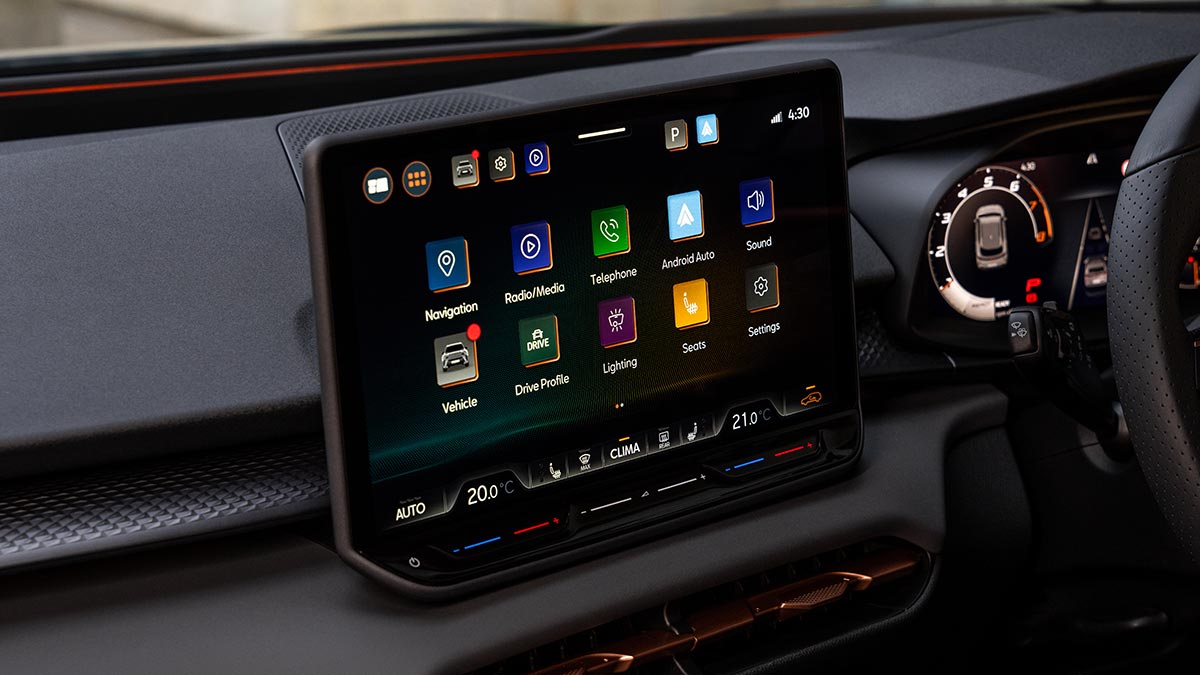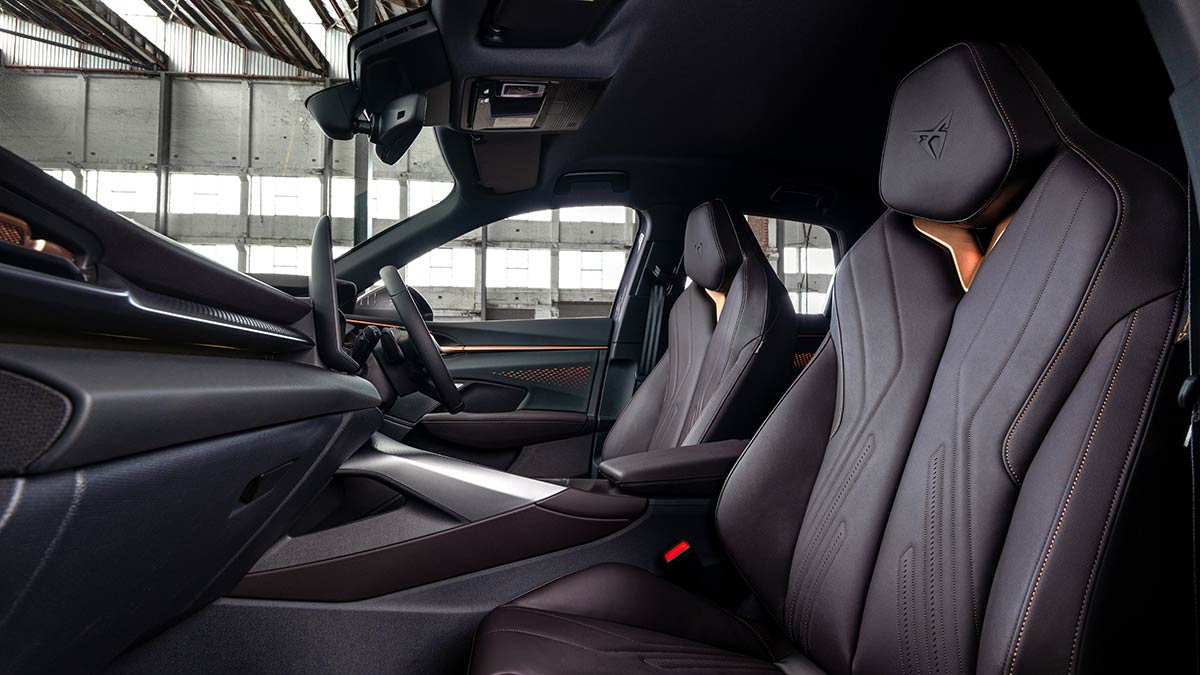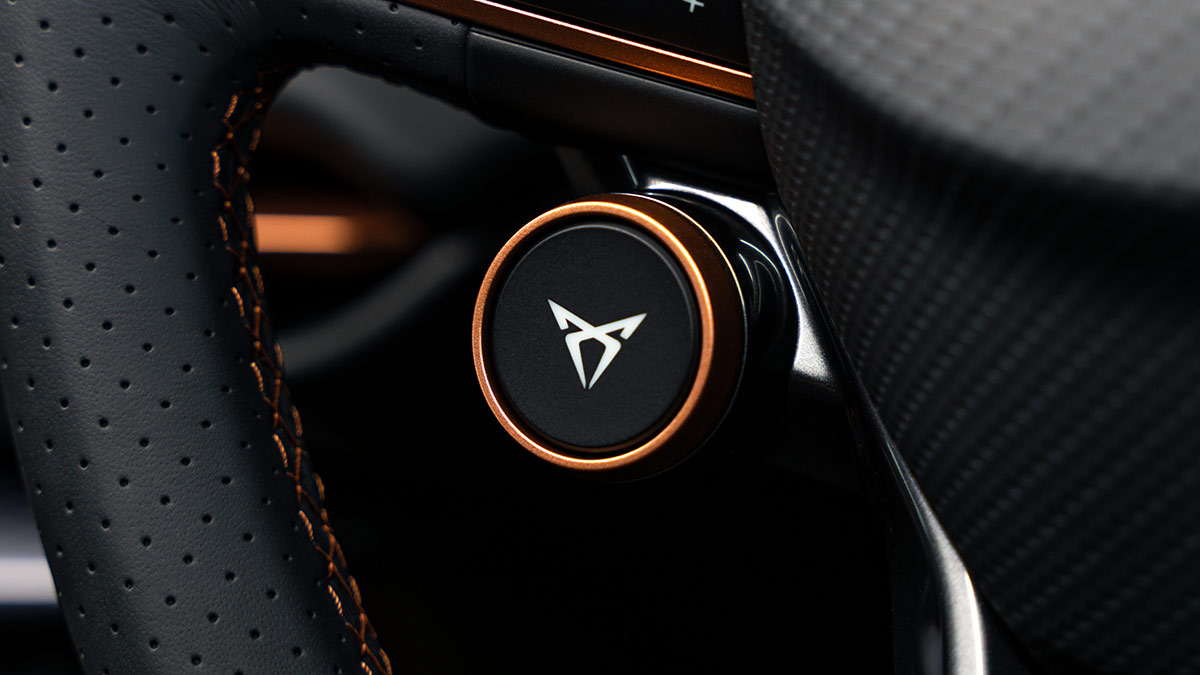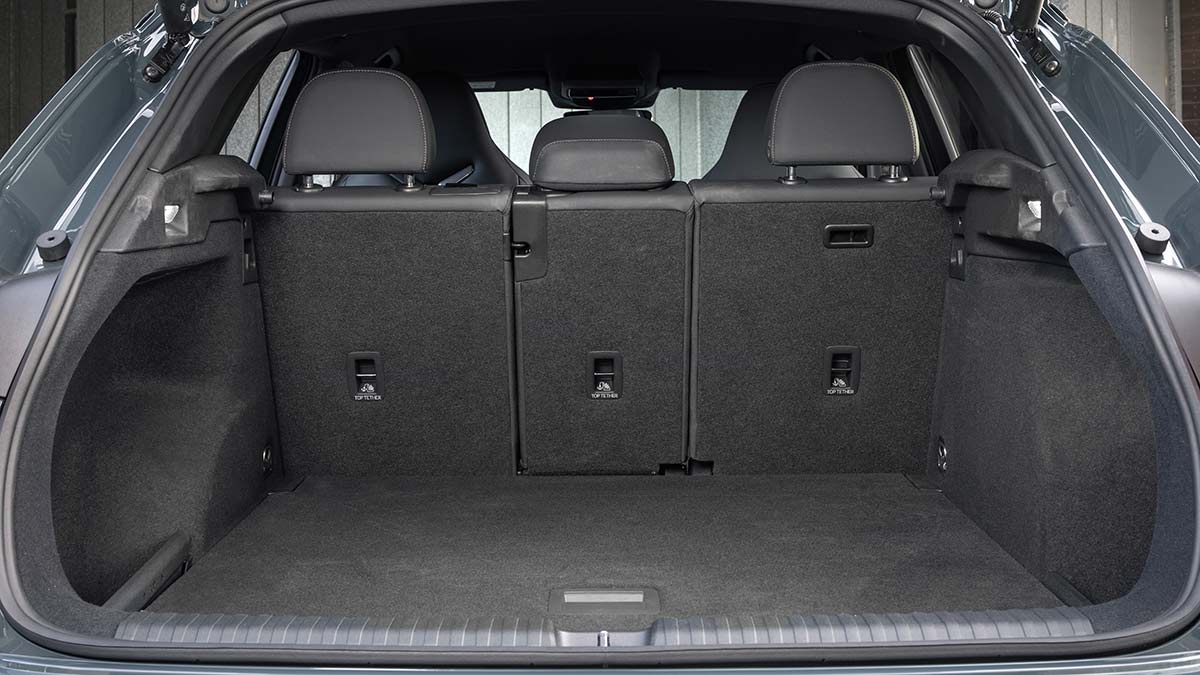The all-new Cupra Tavascan is an electric car for drivers who don't want to compromise on ride and handling when moving to an EV. It's available as both rear wheel drive and all-wheel drive models.
2025 Cupra Terramar review
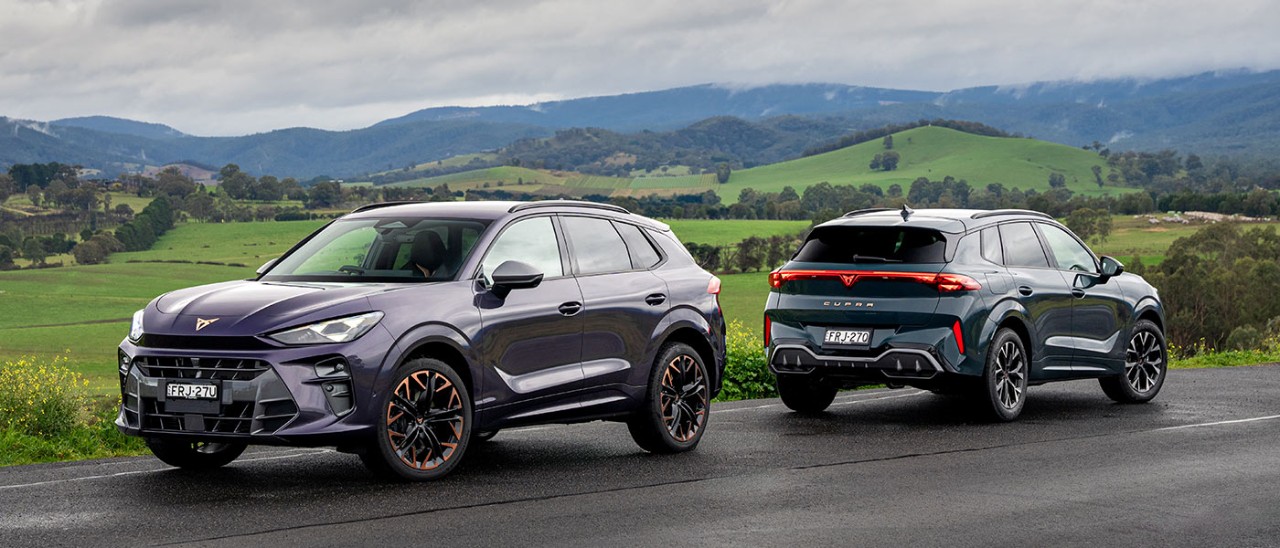
The family takes a back seat in the sporty new Cupra Terramar medium SUV as the Spanish brand focuses squarely on the driver and fun behind the wheel.
The 2025 Cupra Terramar has launched in Australia, providing a second string to the Spanish performance brand’s bow next to the Tavascan EV in the top-selling medium SUV segment.
Built in Hungary next to the Audi Q3 and named after a racetrack in Sitges, near Barcelona, the Cupra Terramar is based on the same platform as the Volkswagen Tiguan but carves out a unique position in the VW Group stable – and among more than 30 class competitors – with its distinctive character and sporting flavour.
This will limit the premium SUV’s appeal as Cupra targets “those who don’t blend in”. However, the brand is nonetheless expecting Terramar to help continue its current sales growth (up 38 per cent year-on-year so far in 2025) alongside Tavascan and with forthcoming upgrades for the Leon hatchback and new Sportstourer wagon (due October) and the Formentor small SUV and Born VZ electric sports hatch (both due early 2026).
Australia accounts for only one per cent of Cupra’s global sales with 9000 cars placed on our roads since the brand launched in 2022, and the company has walked back from its ambitious target of winning 7000 sales a year here by 2025. But Cupra/Seat director of international sales, Erdem Kizildere, is confident the brand will achieve a “meaningful growth rate” on the back of Terramar and other new models, combined with an expanding retail and service network.
“This is a very important market for the brand because it’s a very competitive place,” Kizildere told RACV. “So, from the beginning, our logic was: if you make it here, with more than 70 brands participating, you can make it everywhere.
“But we are not obsessed with growth. We would like to make sure that the growth is coming at a healthy level while we maintain our customer satisfaction … As long as we are in double-digit territory year-over-year, we will be happy.”
Terramar, which relies exclusively on turbo-petrol power in conventional and hybrid form (both mild and plug-in), is a crucial model for Cupra in its quest to build its Australian fanbase. Let’s see how it stacks up.
More: Search and compare new and used cars on sale today in Australia
On this page
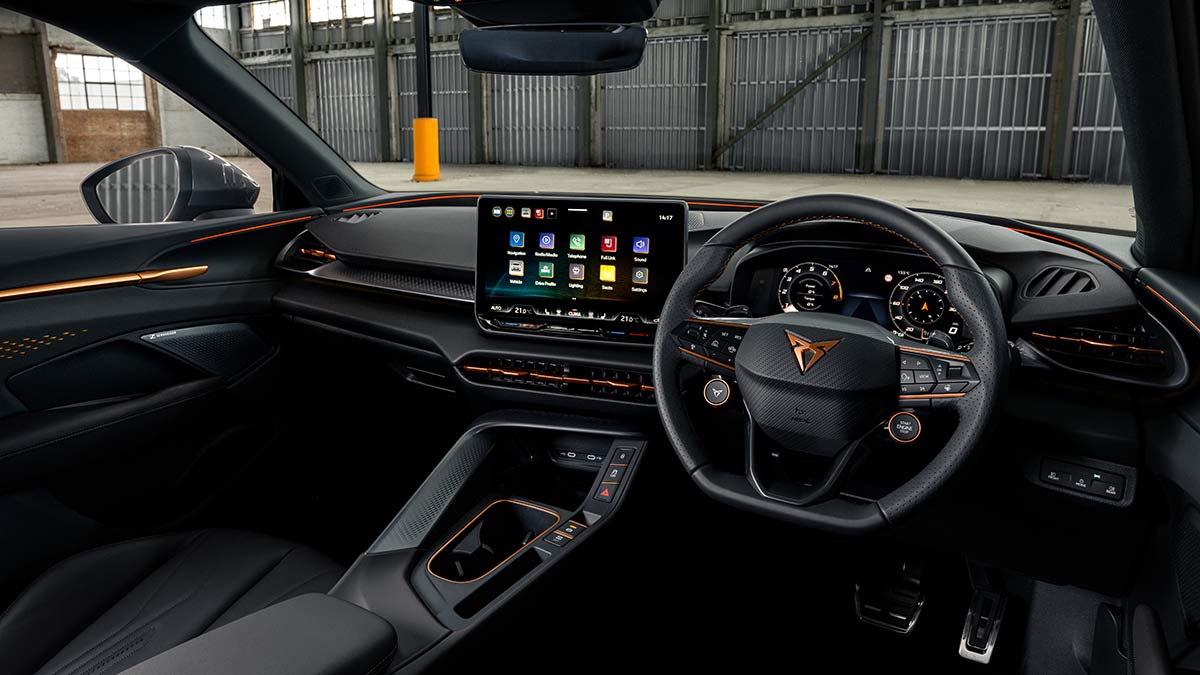
The dark, lavish cockpit of the Cupra Terramar is unashamedly angled towards the driver.
How much does the 2025 Cupra Terramar cost?
The 2025 Cupra Terramar will be offered in four variants, launching in August with the entry-level S – fitted with the brand’s first mild hybrid powertrain – and the performance flagship VZ, both driven here. The mid-series Terramar V is set to arrive in September, ahead of first shipments of the plug-in hybrid VZe in November.
Pricing and specs for the VZe PHEV are still to be announced, but the Cupra Terramar S mHEV is on sale now from $53,990 plus on-road costs ($58,490 driveaway). The Terramar V is priced from $61,990 plus ORCs ($66,490 driveaway), while the range-topping VZ starts at $68,200 plus ORCs ($73,490 driveaway).
Cupra Australia has kept things uncomplicated for prospective owners, who can mull over the different powertrain options and other hardware upgrades with the knowledge that cabin equipment levels are comparable across the range. VW’s Spanish brand sees itself as bridging mainstream and premium segments, so the features are generous from the get-go.
The tech suite, for example, includes a 12.9-inch centre touchscreen, 10.25-inch digital instrument panel, head-up display, integrated satellite navigation, wireless Apple CarPlay/Android Auto smartphone mirroring, digital radio, voice control (with virtual assistant), four USB-C ports and a wireless charger that’s refrigerated to prevent your phone from overheating.
There’s also little separating the models in terms of creature comforts. Among the highlights are front sports bucket seats with heating and 12-way power adjustment, driver’s seat position memory, a heated steering wheel, triple-zone climate-control air-conditioning, auto electronic park brake, ambient interior lighting, keyless entry/start, one-touch power windows and a power tailgate with kick sensor.
The Terramar S and V models have Dinamica black cloth seat trim but can be up-specced to leather-appointed upholstery in an uncommon but attractive deep burgundy that’s fitted standard on the Terramar VZ. This costs $1600 in a package which also includes the VZ’s 12-speaker Sennheiser stereo (upgrading from a Cupra-branded nine-speaker sound system).
A panoramic sunroof is available for $2000 across the range, while VZ buyers can order performance brakes that bring six-piston Akebono front callipers and larger 375mm cross-drilled front discs ($4200). The brake package also deletes the space-saver spare wheel, replacing it with a tyre repair kit.
The Cupra Terramar is covered by a five-year/unlimited-kilometre factory warranty. Service intervals are every 12 months or 15,000km, whichever comes first, and there are capped-price service packs available through the brand’s dealer network and other authorised service centres. These cost $1490 for three years or $2590 for five years, representing a discount of up to 15 per cent, according to Cupra.
There are currently 15 Cupra ‘garages’ and another 23 service outlets in regional areas, with the network expanding to 19 dealerships in the near term. Extra regional service centres are also in the pipeline.
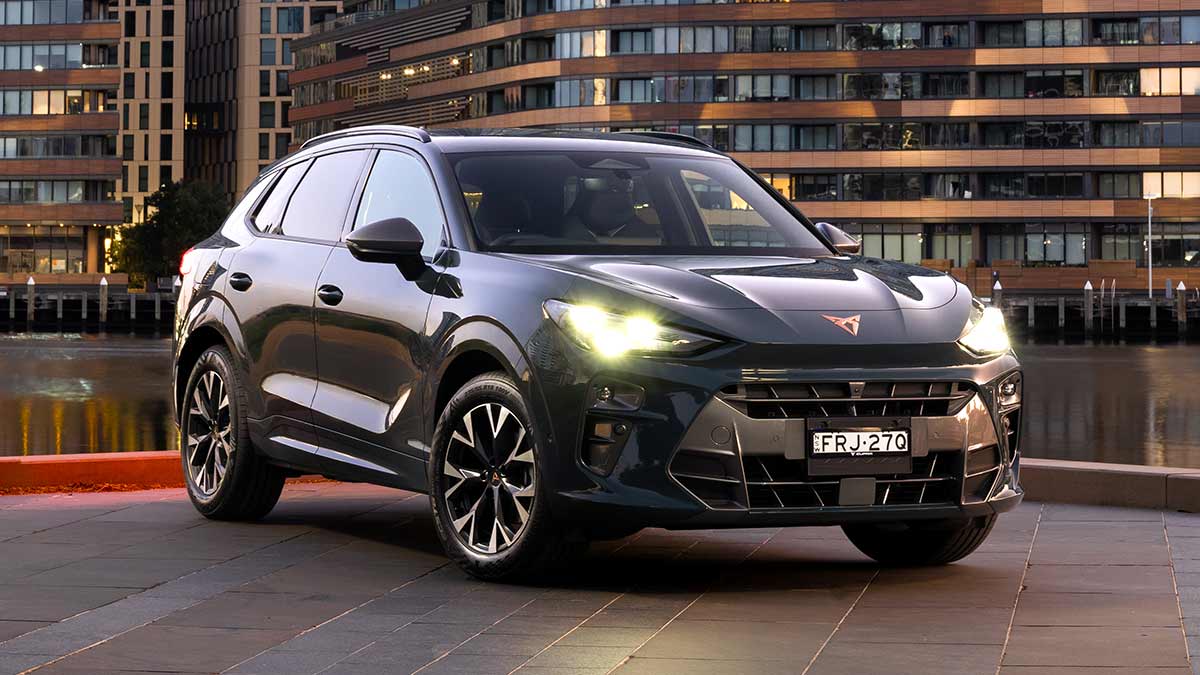
The Cupra Terramar cuts a striking pose from the front end, even with the base S model shown here.
2025 Cupra Terramar exterior design
Upon approach, there is a distinct ‘take no prisoners’ feel to the 2025 Cupra Terramar with its aggressive exterior design that sees a long bonnet taper into a ‘shark’ nose and cascade down into a large, gaping love-it-or-hate-it lower grille and bumper.
The arched roofline, ‘floating’ rear pillar, bulging wheelarches and broad rear haunches and back bumper/diffuser also weigh in to underline the SUV’s sporting intent.
In keeping with the Spanish brand’s design ethos, triangular elements are found across the vehicle, perhaps most notable in the narrow LED headlight cluster and, at the rear, the LED tail-light signature and illuminated Cupra logo. You will not find a Terramar badge on the sculpted bodywork, however the name glows like an ember in the tail-light housing.
The Terramar S uses 18-inch ‘Atomic’ black and silver alloy wheels, moving to 19-inch ‘Cosmic’ black and copper alloys in the Terramar V and progressing to 20-inch ‘Hadron’ black and copper alloy rims with 255/40-section Continental tyres on the top-spec Terramar VZ. The flagship model also features Matrix Ultra cascading high-beam LED headlights.
The standard exterior colours are Glacial White, Fiord Blue, Timanfaya Grey, Midnight Black and Cosmos Blue. Premium metallic Dark Void (purple) and Graphene Grey cost an extra $620, while Century Bronze and Enceladus Grey matte paint finishes will become available from late this year (MY26) for a whopping $2900.
What is the Cupra Terramar like inside?
Just as the exterior has obvious sporting overtones, the interior of the 2025 Cupra Terramar follows this theme with dark trim, copper-coloured highlights and a driver-centric front compartment.
This provides a cosseting feel from behind the wheel with its big, supportive and comfortable bucket seat, high windowsill and a dash and console design that’s angled unashamedly toward the driver. Other occupants might feel excluded, but it’s in keeping with Cupra’s positioning as this being a driver’s car rather than toeing the line as a conventional family SUV.
Full adjustment for the driver’s seat and steering wheel help ensure an excellent driving position and there’s a generous amount of room in all directions up front. The digital instrument binnacle is clear and well laid out in the different screen formats available, the controls on the steering wheel are tactile and simple to use – including the Cupra drive profile and start/stop buttons – and the head-up display is a handy inclusion.
Indeed, for the most part the Terramar strikes a good balance between oft-used switchgear and less-demanding controls that require delving into the touchscreen, the latter using large icons and keeping submenus to a minimum. No issues surfaced with the speed of the operating system or smartphone connections on our first drive, but we did find the slide adjustment for cabin temperature needed a deft touch (that is, repeated attempts for this driver) and we missed having fan speed control on the home screen.
The tapered roofline limits rearward vision for the driver but doesn’t impinge too much on headroom for taller people sitting in the back seat. The Terramar is not, however, a big car for this class and the rear compartment is better suited to two passengers rather than three.
The centre rear occupant must contend with a large transmission tunnel and a narrow position with a harder seatback that doubles as a pull-down armrest (with integrated cupholders). They would also block access to the rear of the console box where there’s a couple of small air vents, separate climate controls and two USB-C ports.
The rear outboard seats are more comfortable and the slide-adjustable bench assists with legroom that’s otherwise quite restrictive when set forward. Two ISOFIX and three top tether strap anchor points are provided for child restraints and the rear seatbacks (split 40/20/40) create a convenient space for longer items such as a bike when folded down.
The cargo floor is set high (even in the lower of two height levels) and limits luggage volume to 508 litres with the rear seats upright and in the rearmost position (642L when slid forward). A temporary spare wheel is provided under the floor and smaller items can be stowed in the side trim area.
Is the Cupra Terramar good to drive?
If it wasn’t good to drive, VW’s Spanish sports brand would have failed with the 2025 Cupra Terramar, so we’re pleased to report that the VZ in particular hits the mark. Terramar S? Less convincing, and not just because we were swapping between them on our circa-200km launch drive in and around Melbourne.
Cupra could’ve spared us the artificial engine sounds that vary according to the drive profile selected, but there’s no doubt about the solid foundations and engineering effort that delivers an engaging drive in the VZ.
This flagship model has a 195kW/400Nm 2.0-litre four-cylinder turbocharged engine that combines with a seven-speed DSG dual-clutch transmission and part-time all-wheel drive system that favours the front wheels until a loss of traction is detected, whereupon torque will be sent to the rear.
Despite tipping the scales at a hefty 1803kg (tare), Terramar VZ can accelerate from 0-100km/h in a claimed 5.9 seconds and on the road it proves to be a smooth and vigorous performer – not rapid like a lighter Volkswagen Golf GTI, but more a strong and dependable type.
The transmission works well in concert with the engine, and while the ride and handling balance skews in favour of the latter, adaptive dampers contribute to firm but comfortable progress across rough Melbourne roads on the 20-inch wheel and tyre combination. Tyre noise can be intrusive but refinement levels are otherwise high.
For keen drivers, the VZ inspires confidence with its roadholding and grip, maintaining composure and control in corners and responding well to driver inputs with accurate steering and excellent braking feel and effectiveness. Selectable driving modes (Comfort, Performance, Cupra) can also be used to dial up, or tone back, throttle response, steering and suspension settings and to finetune via an Individual mode that requires some digging into the touchscreen.
The entry-level Terramar S relies on a new 110kW/250Nm 1.5-litre turbo-petrol engine with 48V mild-hybrid assistance that might help lower fuel consumption but doesn’t provide a booster shot in performance terms. This is reflected in the 1696kg SUV’s official 0-100km/h time of 9.3 seconds, while out in mixed road conditions the driver can be left asking for more responsiveness at times.
Again, the seven-speed DSG works well enough here, and, as with other models, has manual shift paddles on the steering wheel to hand more control over to the driver. Tooling around town or cruising on the open road, the Terramar S is also a smooth, if benign, performer.
Overall, though, there’s less fun in the drive with the engine’s limited output – noted most often on a tight, winding uphill road – which is a shame considering the front-drive and passively-damped Terramar S combines proficient handling with an absorbent ride and good refinement.
For economy, the Terramar S returned 6.5L/100km on the launch drive and we saw 9.4L/100km on Terramar VZ in a shorter stint, which is better than we might have expected given the conditions and not too far from the manufacturer’s official claim (5.7/8.2L/100km respectively). Both run on 95 RON premium unleaded.
For the record, the soon-to-launch mid-range Terramar V uses the detuned version of the VZ’s 2.0-litre turbo (150kW/320Nm) with AWD, accelerating from 0-100km/h in 7.1 seconds and claiming 7.2L/100km mileage.
The Terramar PHEV is based on the 1.5-litre turbo but will ramp power up to around 200kW and offer an all-electric driving range of more than 100km. This second-generation plug-in hybrid system will also offer DC fast-charging capability on a Cupra PHEV for the first time.
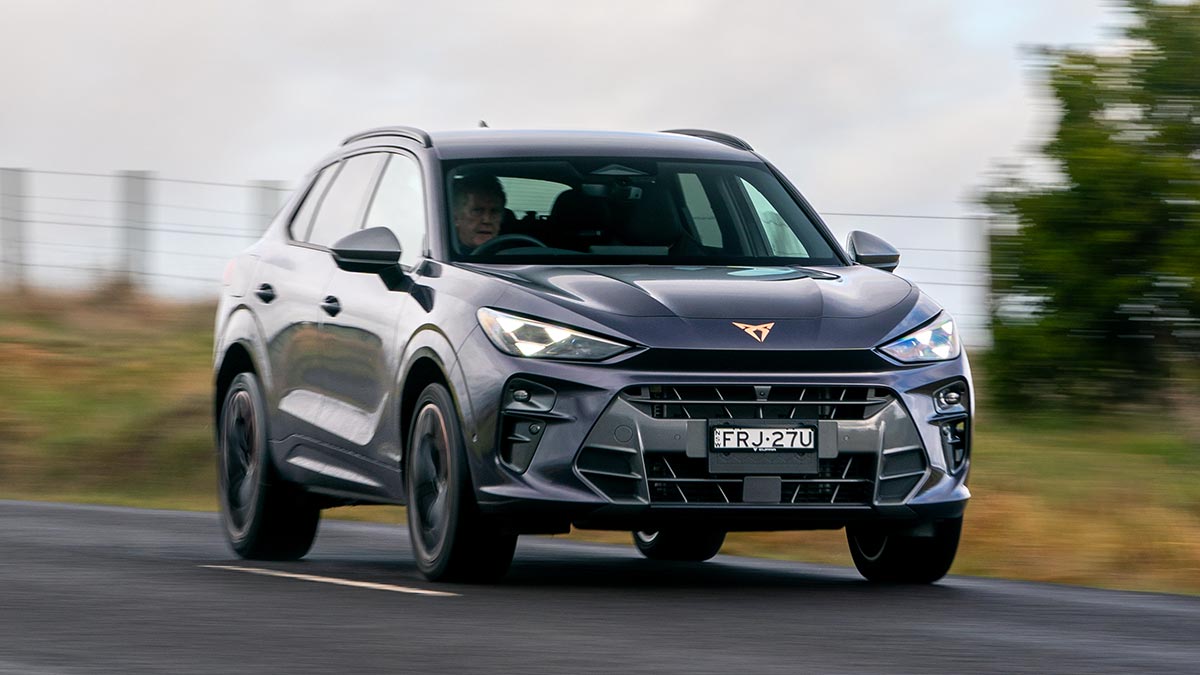
Terramar VZ features a 195kW turbo engine, Cupra driving mode, matrix headlights, adaptive suspension, upgraded brakes and a 20-inch wheel and tyre combination.
What safety features does the Cupra Terramar have?
The 2025 Cupra Terramar is fitted standard with a wide range of active assist features for the driver, including autonomous emergency braking (AEB) which operates at high and low speeds in various scenarios such as car-to-car, junction/crossings and near vulnerable road users – pedestrians, cyclists and motorcyclists.
AEB does not function in reverse, but the Terramar does have rear cross traffic alert and an exit warning to assist drivers when backing out, plus further support from front and rear parking sensors and a 360-degree camera with dynamic parking guidelines. A self-parking system is also included.
Lane support systems cover lane keep assist, lane departure warning and emergency lane keeping, while blind spot monitoring warning lights are incorporated into the ambient lighting strip at the top of the front doors. This seems odd at first but works well in most circumstances given it’s closer to the driver’s eyeline than lights outside the cabin in the wing mirrors. The warning lights can, however, be difficult to see when direct sunlight hits the door trim.
Other advanced driver assistance systems (ADAS) include tyre pressure monitoring, speed sign recognition, adaptive cruise control (with ‘follow to stop’ functionality), automatic high beam, driver drowsiness detection and attention alert.
Happily, these systems are generally well calibrated and not overly intrusive for the Terramar driver. The adaptive cruise control is simple to engage and refine, while other systems can be easily adjusted using the steering wheel switchgear.
In the event of a crash, the driver and front passenger are protected by dual frontal airbags, side chest-protecting and side head-protecting (curtain) airbags. There’s also a centre airbag in between the front seats, while the curtain airbags extend to the rear compartment.
ANCAP has awarded the Cupra Terramar a maximum five-star safety rating based on the independent crash test authority’s current 2025 testing protocols. The SUV scored well across the four key areas of assessment: adult occupant protection (89%), child occupant protection (87%), vulnerable road user protection (82%) and ‘safety assist’ (78%).
One area that’s lacking across the Cupra range in Australia is connected services, including an emergency call (eCall) system that’s designed to automatically connect the vehicle to an emergency response centre in the event of a serious collision.
Cupra Australia has told RACV that it’s considering eCall for our market, which could also bring enhanced features such as stolen vehicle tracking. But it’s a work in progress, so watch this space.
More: What is eCall and how crash detection technology can save lives
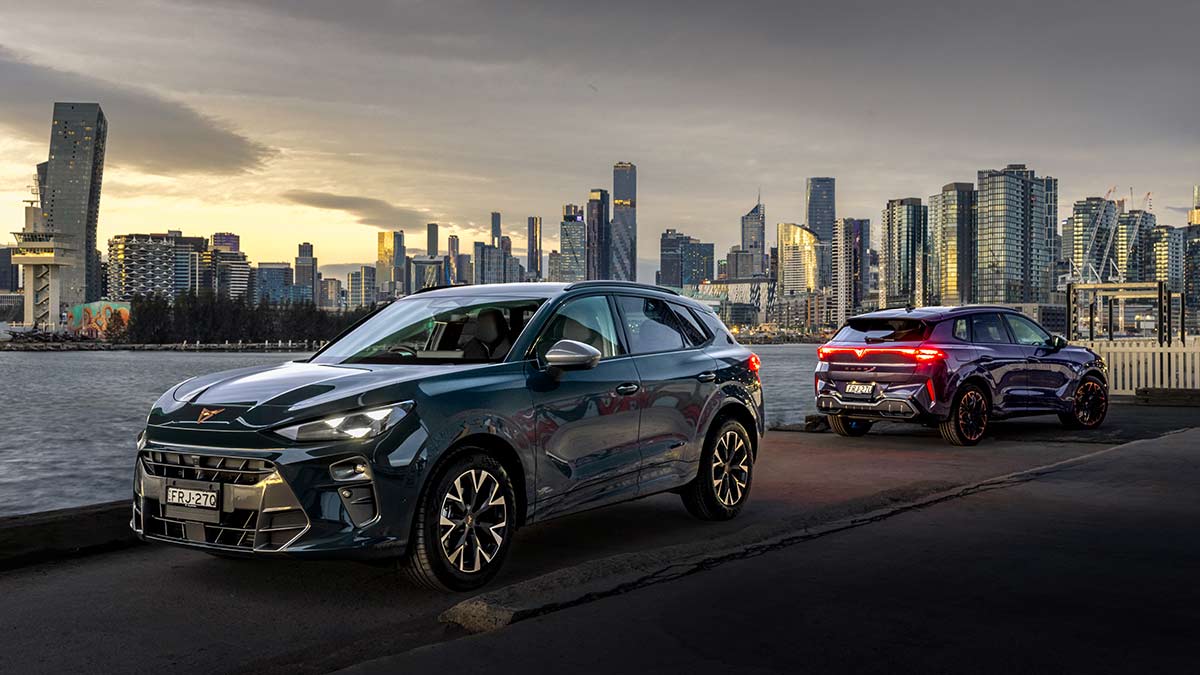
The Terramar S might be the most affordable model in the range, but Cupra expects most buyers to be drawn to the VZ.
How does the Cupra Terramar compare?
The 2025 Cupra Terramar is positioned up high among the major mainstream medium SUVs and quite low if it’s compared against prestige competitors.
Cupra insists there’s not a lot of cross-shopping between VW Group brands, and that its engineers have made unique changes in areas such as the chassis, but it stands to reason that prospective buyers would also consider the Volkswagen Tiguan (from $44,990 plus on-road costs), Skoda Karoq (from $38,490) and, at the top end, the new Audi Q5 (from $81,000).
We’d certainly be driving the Volkswagen Tiguan 195TSI R-Line 4Motion (from $70,490) alongside the Terramar VZ before signing up, or a near-new VW Tiguan R. At these heights, other legitimate rivals include the previous Porsche Macan with its related 2.0-litre powerplant (low-kilometre second-hand models can be found around the same mark), the BMW X3 (from $86,800) and Alfa Romeo Stelvio (from $77,950).
From left field, the high-spec but more affordable BYD Sealion 6 PHEV (from $52,990 in performance dual-motor AWD guise) is worth considering, while the less idiosyncratic but excellent all-round performers in this class are still hard to go past: the Kia Sportage, Hyundai Tucson, Honda CR-V, Nissan X-Trail, Subaru Forester and even the ageing Toyota RAV4. That may be a bridge too far for would-be Terramar VZ owners, but perhaps not if you’re studying the base S.
More: Australia’s best medium SUVs of 2024
Should I buy a Cupra Terramar?
For something different but engaging, the 2025 Cupra Terramar VZ is an excellent new entrant in Australia’s most popular and competitive market segment.
The biggest vehicle in Cupra’s stable to date, the medium SUV is sure to entice those familiar with Volkswagen’s Spanish sports brand and others who want to shun cookie-cutter models in class.
Almost at the exclusion of others in the car, the Terramar is an indulgence for drivers with its interior design and, in the case of the VZ, its strong performance across the board.
Whereas the Terramar S lacks the muscle needed to match expectations that come with both the brand and the nameplate, the VZ exceeds them.
The information provided is general advice only. Before making any decisions please consider your own circumstances and the Product Disclosure Statement and Target Market Determinations. For copies, visit racv.com.au. As distributor, RACV Insurance Services Pty Ltd AFS Licence No. 230039 receives commission for each policy sold or renewed. Product(s) issued by Insurance Manufacturers of Australia Pty Ltd ABN 93 004 208 084 AFS Licence No. 227678.
